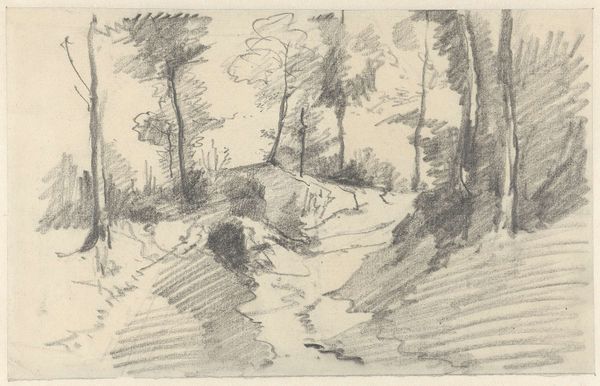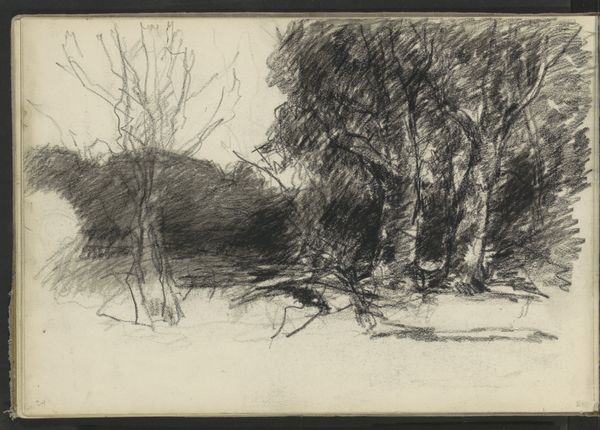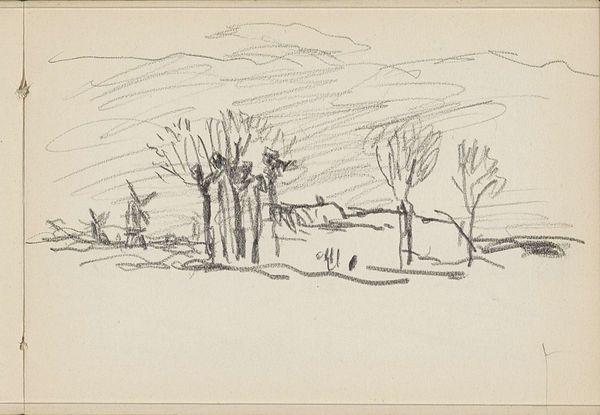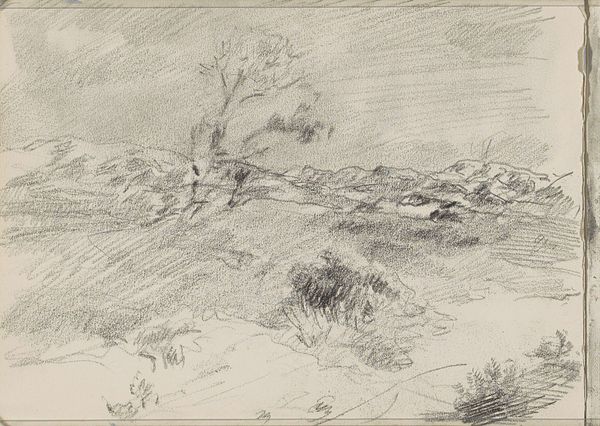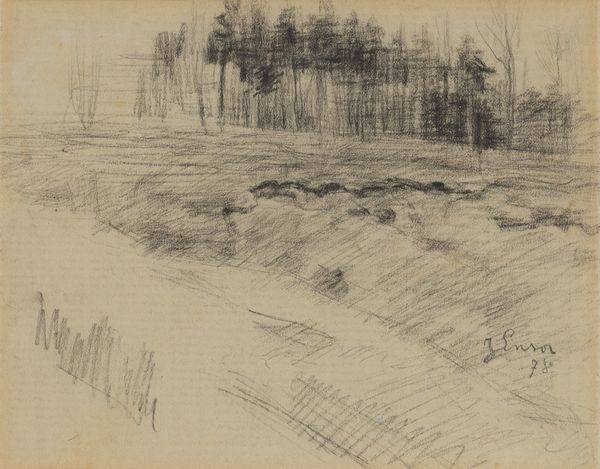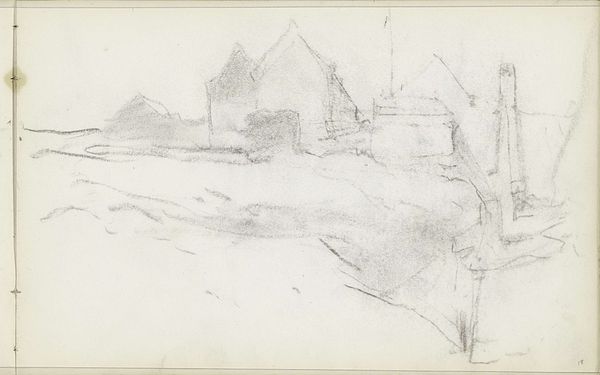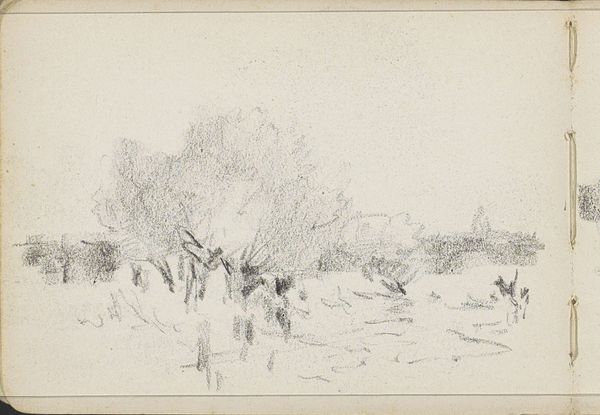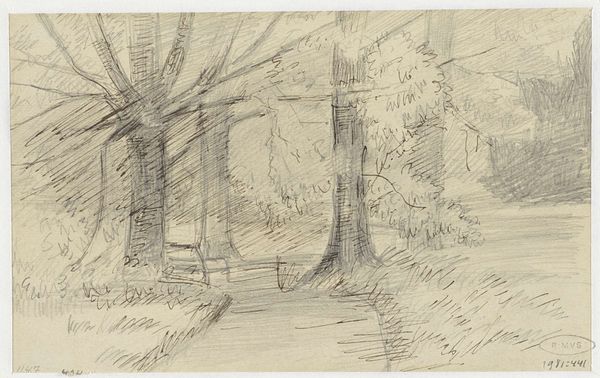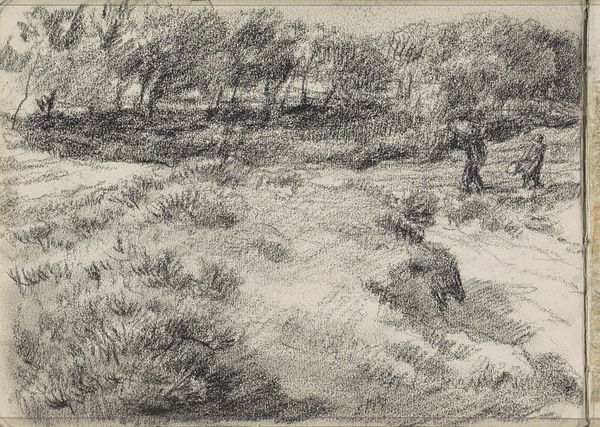
drawing, pencil
#
drawing
#
amateur sketch
#
light pencil work
#
impressionism
#
pen sketch
#
sketch book
#
landscape
#
personal sketchbook
#
sketchwork
#
ink drawing experimentation
#
pen-ink sketch
#
pencil
#
sketchbook drawing
#
sketchbook art
#
realism
Copyright: Rijks Museum: Open Domain
Editor: This drawing, "Weide met bomen en een hek," or "Pasture with Trees and a Fence," is attributed to Anton Mauve and thought to be created sometime between 1848 and 1888. It looks like it was quickly sketched using graphite pencil. There’s a raw energy in the mark-making; it feels immediate, like a fleeting observation. What do you see in this piece, considering the period it was made? Curator: Well, seeing a drawing like this from Mauve, we have to ask, whose “nature” are we really looking at here? Think about the Netherlands during this time—rapid industrialization, urbanization, shifting class structures. Artists like Mauve, working in a Realist or early Impressionist mode, are idealizing the countryside. Who has access to that idealized landscape, and who is excluded? It’s tempting to see a serene, untouched scene, but isn't this also a commentary, even unconscious, on land ownership and access in a rapidly changing society? Look at the fence - what does it define and what does it exclude? Editor: That’s a really interesting perspective. I was initially just thinking about it as a study of light and shadow, but I see how that fence line might be a loaded symbol. Were these landscapes always apolitical? Curator: Almost never! Landscape, throughout art history, serves as a site for projecting cultural anxieties and aspirations. Who gets to define the 'natural' and who benefits from that definition? Who is absent? For peasant artists like Millet the fields and country life held a gritty realism in depicting daily life; the more affluent painters often ignored this harsh side and sentimentalized country living. Mauve perhaps falls somewhere in between. Consider the politics inherent in deciding what aspects of rural life to portray and which to omit. Editor: So it’s not just about the trees and the light, but the stories behind the ownership and portrayal of the land? Curator: Precisely. It is also crucial to see art as both responding to and shaping social values. Art plays an active role. Editor: I'll never look at a landscape the same way again! It’s fascinating how a seemingly simple sketch can hold so much history and social commentary. Curator: Exactly! I hope this broadened how you view this type of work, because understanding the socio-economic climate makes us more thoughtful viewers of art.
Comments
No comments
Be the first to comment and join the conversation on the ultimate creative platform.


